Do you ever take a look underneath your kitchen sink and wonder what is going on with all that pipework? You may be surprised to learn just how much plumbing goes into keeping your kitchen in working order.
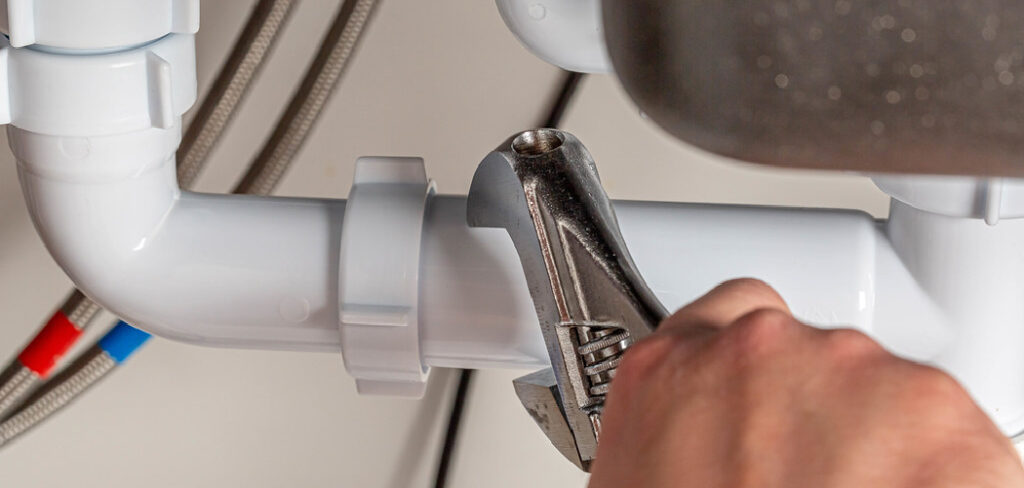
From understanding the anatomy of pipes and taps to fixing clogs, this guide can help you become more familiar with how kitchen sink plumbing works. Whether you are tackling a DIY project or looking for tips on how to maintain the pipes beneath your sink, this post has the answers. Read on to learn more about the ins and outs of maintaining and fixing kitchen sink plumbing!
The Anatomy of a Kitchen Sink’s Plumbing
A kitchen sink’s plumbing consists of two main parts: the drain pipes and the tap fixtures. The drain pipes consist of three sections: an inlet pipe, a trap, and a tailpiece. The inlet pipe is connected to the sink and runs through the back wall.
The trap is a curved section of pipe that creates an “S” shape, holding water to stop sewer gases from entering your kitchen. The tailpiece connects the trap to the drain pipe that leads out into the main sewer line.
The tap fixtures are typically connected directly to the sink. They consist of two parts: the water supply lines and the faucet. The water supply lines connect to the sink’s inlet pipes and are responsible for bringing hot and cold water into the sink. The faucet controls the flow of water from the tap fixtures.
A Detailed Discussion on How Kitchen Sink Plumbing Works
The first step in understanding kitchen sink plumbing is to learn about the various types of pipes and fixtures that are used. The most common type of pipe used for kitchen sinks is PVC, as it is resistant to corrosion and long-lasting. When connecting different types of pipes together, a coupling or union should be used to ensure a watertight seal.
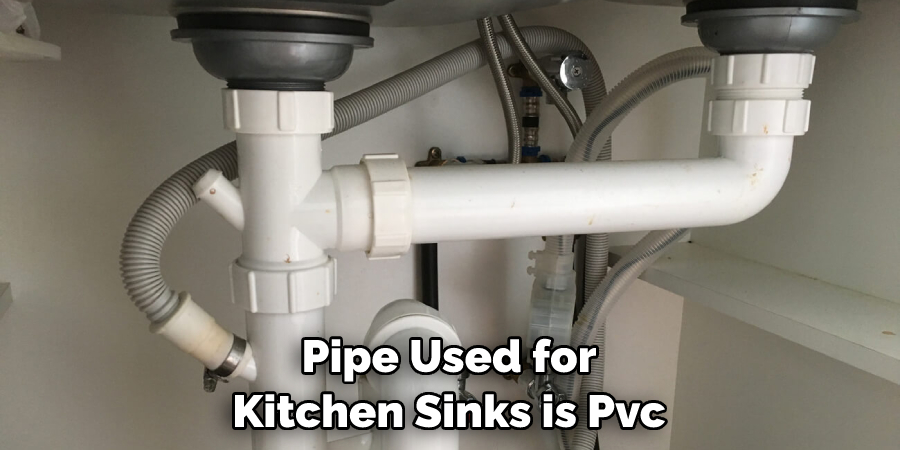
Next, you’ll need to understand how the drain works. The sink drains by gravity, allowing water to flow down into the pipes below. As the water flows through the pipes, it passes through a vent system, which allows air to enter and equalize pressure in the line. This helps prevent an imbalance of pressure and keeps water draining properly.
Once the water has reached the trap, it is prevented from entering the sewer system by a blockage of water. This is referred to as a “P” trap, which uses the weight of the water to keep any gas or debris from traveling back up into your home. The tailpiece then carries any wastewater away from the sink and out of your home.
Finally, when it comes to taps, understanding how they operate is key. The water supply lines bring hot and cold water into the sink. A valve installed in the wall controls which type of water flows into the sink. The faucet itself then allows you to control the flow and temperature of the water coming out. If the water coming out is too hot or cold, you may need to adjust the valve.
By understanding how kitchen sink plumbing works, you can better maintain and repair your own kitchen plumbing system. From understanding the anatomy of pipes and taps to fixing clogs, knowing how it all fits together can help make dealing with any issues much easier.
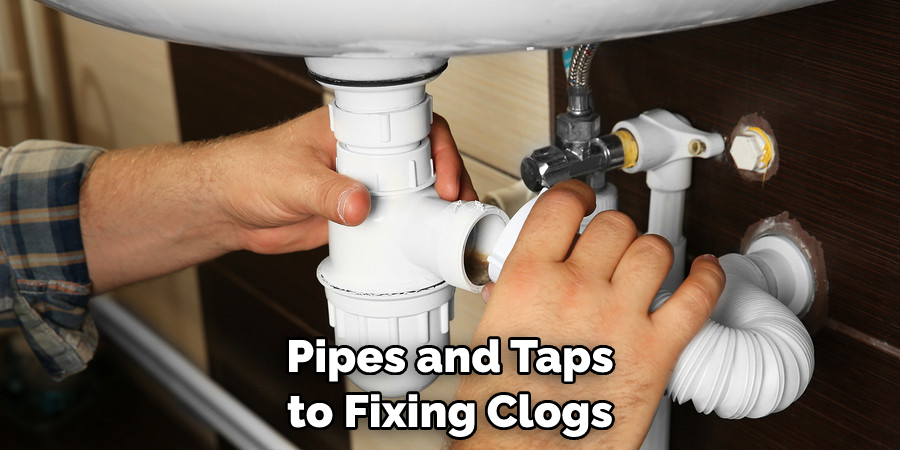
Some Common Issues on Kitchen Sink Plumbing
Like with any plumbing system, there are certain issues that may arise with kitchen sink plumbing. One common issue is clogged, which can occur when food or other debris gets lodged in the pipes.
It’s important to clean out your sink regularly to avoid this problem. Additionally, you should be aware of signs of a leaking faucet or pipes, which can be caused by worn-out gaskets or loose fittings.
If you experience any of these issues, it’s important to contact a professional plumber. They can help make sure the plumbing is installed correctly and diagnose any underlying problems that may exist. With the right knowledge and maintenance, kitchen sink plumbing can remain in good working order for many years to come.
What Things Should You Consider While Doing Kitchen Sink Plumbing Works?
When it comes to kitchen sink plumbing, there are several things you should consider in order to ensure a successful installation. First and foremost, make sure all of the pipes used in your project are compatible with each other.
Additionally, be sure to follow any local code regulations for plumbing systems. Lastly, when installing the drain or tap fixtures, be sure to place them at the proper height in order to ensure proper drainage and water flow.
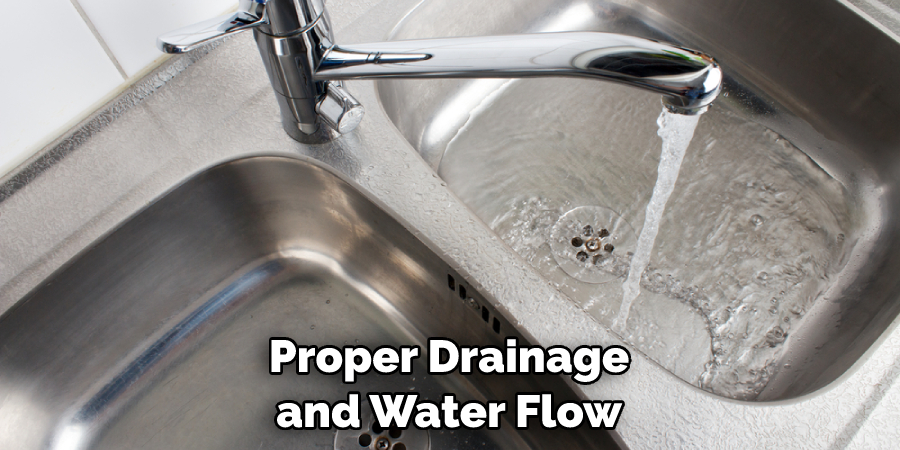
Troubleshooting Tips on Kitchen Sink Plumbing
When it comes to fixing kitchen sink plumbing issues, it’s best to call in a professional plumber. However, if you have some basic plumbing knowledge, there are some troubleshooting tips you can follow.
1. First, try unclogging the drain by using a plunger or snake. If this doesn’t work, you may need to remove the drain cover and clean out any food particles or debris that has been collected inside.
2. If you’re dealing with a leaking faucet, try tightening the bolts and gaskets first. If this doesn’t work, it might be necessary to replace the entire fixture.
3. If you’re having trouble with the water supply lines, check them for any signs of cracks or tears. If necessary, replace the entire line to ensure a secure connection and stop any leaks.
By following these troubleshooting tips, you can identify and fix minor plumbing issues quickly and safely. However, if the issue is too complex or you’re unsure how to proceed, it’s important to consult a professional plumber.
Maintaining Tips on Kitchen Sink Plumbing
To keep your kitchen sink plumbing in good condition, it’s important to follow some basic maintenance tips.
- Regularly inspect the pipes and fixtures for signs of wear or damage. This will help identify any small issues before they become large problems.
- Clean out the sink regularly to prevent clogs from occurring.
- If you’re dealing with a leaking fixture, try tightening the bolts and gaskets first before replacing them completely.
- Make sure all of the pipes and fittings are properly sealed to prevent water from leaking out.
By following these tips, you can ensure that your kitchen sink plumbing works correctly and efficiently. Taking the time to inspect and maintain your sink will help keep it in good condition for many years to come.
Frequently Asked Questions
How Do I Unclog My Sink?
The best way to unclog a sink is by using a plunger or snake. If this doesn’t work, you may need to remove the drain cover and clean out any food particles or debris that has been collected inside. Be careful not to use a chemical unclogged, as these can be damaging to your pipes.
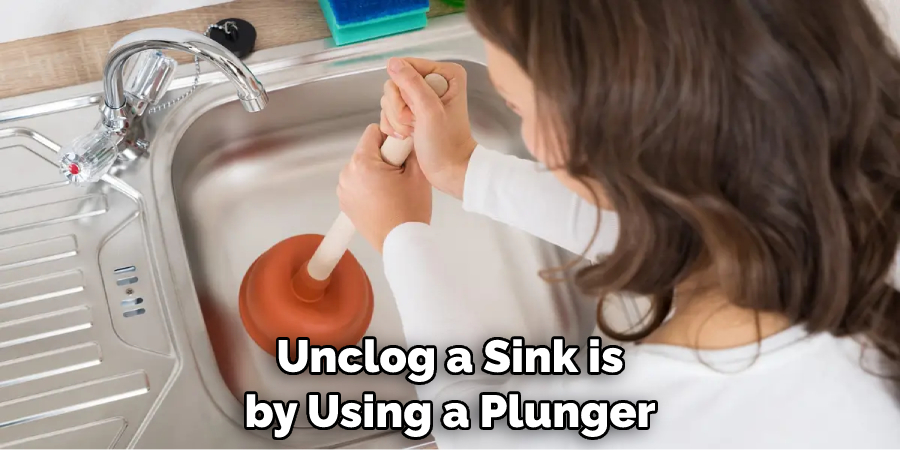
How Can I Prevent Clogs in My Sink?
The best way to prevent clogs is by cleaning out your sink regularly. Make sure you remove any food particles or debris that have been collected inside the drain and pipes. Additionally, you should try to avoid pouring cooking oils and fats down the sink, as these also cause clogs.
What Should I Do If Have a Leaking Faucet?
If you have a leaking faucet, try tightening the bolts and gaskets first before replacing them completely. If this doesn’t work, it might be necessary to replace the entire fixture. It’s best to contact a professional plumber if you’re not sure how to proceed.
How Can I Tell If I Need to Replace My Pipes?
If you notice any cracks or tears in your pipes, it’s best to replace them immediately. Additionally, if the pipes look old and rusty, they may need to be replaced. It’s important to call a professional plumber if you’re not sure how to proceed.
What Maintenance Should I Do for My Kitchen Sink Plumbing?
To keep your kitchen sink plumbing in good condition, it’s important to inspect the pipes and fixtures regularly for signs of wear or damage. Clean out the sink regularly to prevent clogs from occurring, and make sure all of the pipes and fittings are properly sealed. Taking the time to inspect and maintain your sink will help keep it in good condition for many years to come.
Conclusion
It’s important to know at least the basics of how kitchen sink plumbing works and maintain your plumbing system. From understanding your pipes, installation planning, and attaching fixtures, this blog post was meant to provide a helpful overview of kitchen sink installation. If you have some knowledge of your current setup and basic household tools, you can tackle many minor repairs yourself.
For more comprehensive DIY projects, hire a professional plumber for assistance. Of course, when in doubt or uncertain about any step in the process, it is best to consult a certified plumbing expert for help before attempting a major repair that could cause more harm than good.
With the right information and careful instructions from this blog post in hand, you can trust that your new kitchen sink will be properly installed for years of use and enjoyment!
Professional Focus
Angela Ervin, a former interior designer turned blogger, specializes in kitchen design and renovations. Through her website, she blends her passion for cooking with design expertise, sharing practical and creative ideas. Known for balancing functionality and beauty, Angela’s insightful content has made her a trusted voice in home design and lifestyle.
About the Author
Angela Ervin, an experienced interior designer and blogger, combines her passion for kitchen renovations with storytelling. Living in Petersburg with her family, she enjoys cooking and testing her projects firsthand. Known for her humor and relatable style, Angela shares creative, functional design insights through her content, making her a trusted voice in home design.
Education History
University: Virginia Commonwealth University
Degree: Bachelor of Fine Arts (BFA) in Interior Design
- Angela’s education at VCU focused on mastering core interior design principles, including spatial planning, color theory, materials selection, and sustainable design practices.
- She gained hands-on experience through studio projects and collaborative design exercises, which honed her ability to create functional and aesthetically pleasing environments.
- Her coursework also emphasized problem-solving and practical applications of design, preparing her for real-world projects like her self-directed kitchen renovations.
- The program’s strong foundation in both technical skills and creative expression shaped Angela’s ability to seamlessly integrate form and function in her work.


